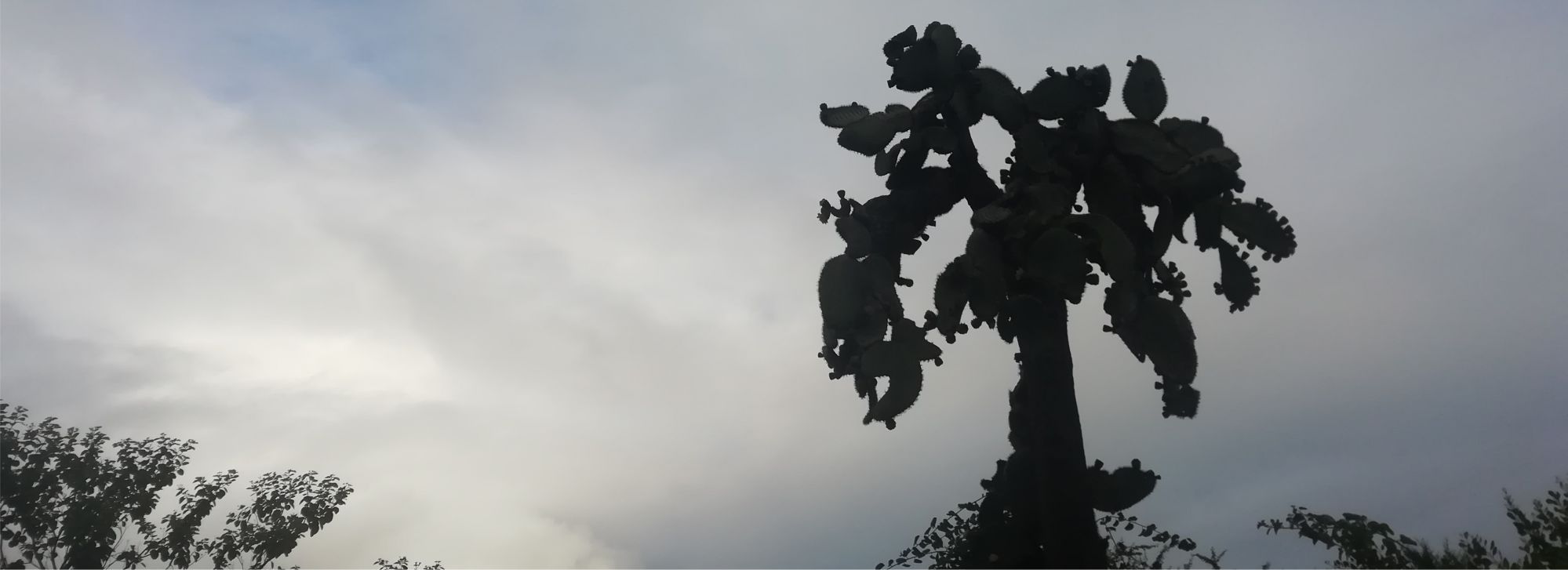The traces of the islands' memory
Galapagos archaeology and cultural heritage
Beyond constituting one of the most valuable natural heritages on the planet, the Galapagos Islands are also home to an interesting cultural heritage, both tangible and intangible.
Cultural heritage is, by definition, the product of a conscious selection by a specific society or group. Therefore, not all the inheritance received from the past can be considered "heritage": only those elements (sometimes, simple fragments) that society itself considers relevant as part of its collective and social memory. Heritage is thus constituted in testimony of a past time considered valuable by a human group: a series of traces left in memory.
The tangible heritage includes buildings, monuments, landscapes, books, art works, and other artifacts. For its part, the intangible includes folklore, traditions, languages and knowledge in general.
In Galapagos, the tangible cultural heritage ranges from the remains left on the island's shores by the first visitors to the early constructions of the settlers, passing through historical artifacts, roads, piers and other traces left on the islands by human presence. The latter includes documents such as photographs, field notebooks or films.
Thus, the buildings that still stand in El Progreso, Asilo de la Paz or Academy Bay, belonging to the first island colonists, constitute part of the Galapagoan tangible cultural heritage. The same occurs with the elements belonging to the US army that survive in Baltra and in the vicinity of Puerto Villamil, or with the infamous "Wall of Tears". The earliest houses, the water sources, the laundries, the salt flats, the piers, the paths that lead to the upper parts of the inhabited islands: all of them, and all the tangible elements associated with them, constitute cultural heritage. And, as such, they must be identified, studied, protected and disclosed.
Artifacts such as old cars and boats, work tools, or study and research instruments, are also heritage elements. Spaces such as the stone quarries of Santa Cruz or the Floreana caves, which are part of the island's human geography because they are a direct product of human action, also make up tangible cultural heritage. The same thing happens with the bibliographic and audiovisual collections referring to life in Galapagos, including photographs, slides, audio cassettes, video tapes, reel films, brochures, posters, tickets, books, magazines and a long etcetera.
For its part, the intangible heritage of the Galapagos includes, above all, the rich oral tradition that still circulates in the archipelago: that tradition populated with many legends, but which also tells of "small" stories, never recorded in written documents. The spoken word is, even today, one of the richest and most widely used means to transmit memories and knowledge; sadly, libraries, archives and museums often neglect such an asset.
A fragment of this immense and varied Galapagos heritage —the ancient remains found especially on the coasts of certain islands— has been attended (superficially) by a specific discipline: archeology. In 1953, the Norwegian Archaeological Expedition to the Galapagos led by the famous Norwegian explorer Thor Heyerdahl, identified archaeological sites in four spots of the archipelago, where they allegedly found a mixture of pre-Hispanic and historical ceramic remains (including Spanish and British). The results were published in Archaeological evidence of pre-Spanish visits to the Galapagos Islands (1956), and were debated and even doubted by countless historians.
A decade later, and based on Heyerdahl's results, ESPOL (Escuela Politécnica Superior del Litoral, Guayaquil, Ecuador) carried out a vacation internship on Santiago Island. There, a teacher from the institution, engineer Raúl Maruri, collected a set of ceramic fragments, especially of English, Spanish and Mexican origin. Currently, the so-called "Maruri collection" forms the basis of the archaeological collection of the Charles Darwin Foundation's (CDF) Museum.
Finally, in 2005, the archaeological artifacts collection project led by the Australian Simon Haberle, carried out an extensive study (although, even so, superficial) of all the places in the archipelago where remains could be found. In general terms, the findings and subsequent studies revealed the absence of pre-Hispanic materials and, therefore, called into question the visits of pre-Columbian navigators to the Galapagos, a theory strongly supported by Heyerdahl. The Haberle collection is nowadays also housed in the CDF Museum.
There is a huge task ahead in relation to the recognition and study of the cultural heritage of the Galapagos Islands. Archeology has limited itself to scratching the surface, concentrating on the oldest and most colorful remains (pirate jars, whalers' remains...), and leaving aside the wide spectrum of artifacts, buried or not, that can be recovered from the islands' beaches, fields and mountains. History, sociology, human geography, architecture, and engineering have a wide field of study there; something similar occurs with library and archival sciences, and with other disciplines belonging to the social and human sciences.
Returning to the initial idea: heritage includes those elements that society considers relevant as part of its collective and social memory. For Galapagos, it is time to start to know them.
[The photograph that illustrates this text was taken by Edgardo Civallero].
References
Anderson, A. et al. (2016). Reconsidering Precolumbian human colonization in the Galápagos Islands, Republic of Ecuador. Latin American Antiquity, 27 (2), June, pp. 169-183.
Heyerdahl, Thor; Skjølsvold, Arne (1956). Archaeological evidence of pre-Spanish visits to the Galapagos Islands. [Menasha, Wis.]: Society for American Archaeology.
Text & picture: Edgardo Civallero (edgardo.civallero@fcdarwin.org.ec).
Publication date: 1 December 2021
Last update: 1 December 2021
